The first thermal camera developed for the US army took about an hour to generate a single image. The devices have developed quite a bit since then, and now we have a live feed from thermal imaging cameras. Let us take a look at the additions and developments that these devices have undergone since their inception.
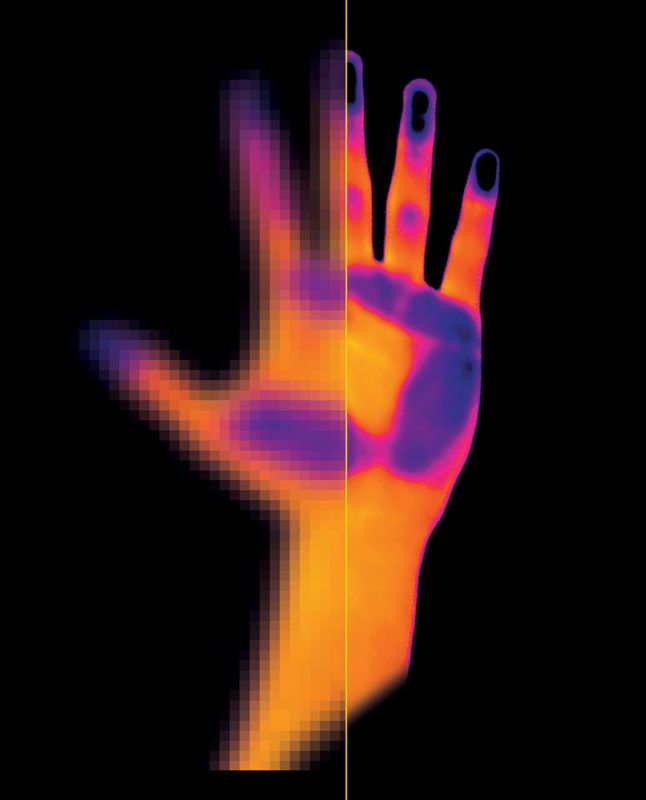
Over the years we have seen many changes in imaging equipment. The time taken to click a thermographic image has come down from an hour to a live video feed of more than 16fps. We also have highly-specialised and portable equipment that can work even in rugged terrains. The optic system and the detector of the camera that define the sensor have also seen many improvements.
According to T.P. Singh, country manager, FLIR Systems India Pvt Ltd, “Thermal Lepton in a clamp meter or multimeter helps an electrician to look for problems much faster.” Lepton is a long-wavelength infrared (LWIR) camera solution that costs less that a dime.
Pixel size has been gradually improving over the years. Now we have 1024×768 pixel modules in the market to cater to high-definition (HD) thermography. Employing such HD modules can significantly improve quality at the cost of making the equipment expensive and increasing power consumption.
“With the introduction of HD video formats even in thermal imaging, a challenge for airports would be setting up of proper communication infrastructure to allow the transfer of all relevant data into a single control centre,” says Roy Israely, marketing director, Opgal. As a trade-off, a 640×480 pixel sensor seems like a better option.
Every manufacturer is trying to make the products more user-oriented rather than technology-oriented. This helps developers to go for equipment that provide ease of use. We have manufacturers like FLIR that provide these cameras as an extension to a smartphone. This has made thermal imaging very convenient and popular. Today, we have thermal imaging being used even in television programmes.
According to Israely, “A key factor would be to allow easy integration with various suppliers of visual molecular dynamics and analytics software, allowing designers to implement our products.”
Emergence of smartsensors
“A good thermal imager should produce a good thermal image, and this can be achievedonly by using a good-resolution sensor (detector),” says Kalidas Bhangare, managing director, Testo India. Housed within the bolometer, a sensor is the heart of a thermal imager. It has undergone several developments in recent years.
There are sensors that could integrate sensing, signal extraction, processing and comprehension. Under the encouragement of the USA’s strategic defence initiative, such smartsensors began to appear.
There are two main types of smartsensors. The vision chips while used in the visible range, using smart sensing techniques, allow pre-processing due to the increase in growth of integrated microcircuitry. The other technology is more oriented to a specific use and fulfils its pre-processing goal through its design and structure.
Better FOV and focus
Comparing two notional thermal cameras that use the same uncooled VOx detectors and 35mm lenses, we get the following estimates. The 320-pixel camera will have a 13°×10° field of view (FOV), while the 640-pixel camera will have an 18°×14° FOV. This will give you a nearly 40 per cent increase in coverage area while still being able to detect a person from nearly 50 per cent farther away. The tactical and economic benefits of increased resolution are measurable and undeniable.
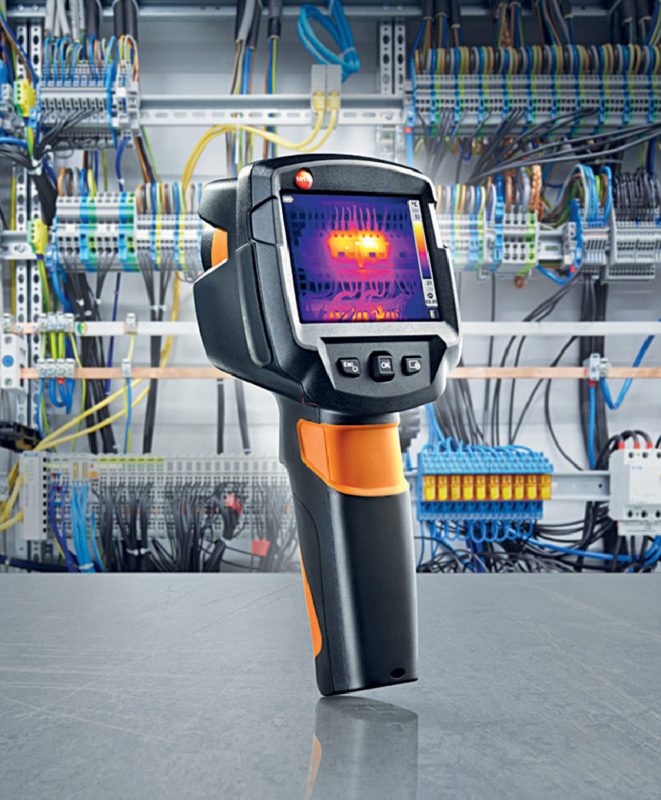
Fluke Ti450 IR camera delivers images automatically focused throughout the FOV. Using a multi-sharp focus technology, it takes multiple images and combines these to produce one in-focus image. Similar technologies allow clarity in thermal imaging cameras, which was missing earlier. With further wireless connectivity, these are handy in the field.
There is also a super-resolution technology from Testo that provides images suitable for data analytics. It works by increasing the instantaneous FOV and is not like a digital enhancement, explaines Bhangare.
Adding such features drastically changes the imaging game. A thermal camera employs sensors that capture IR light radiating off objects. These require significant power.
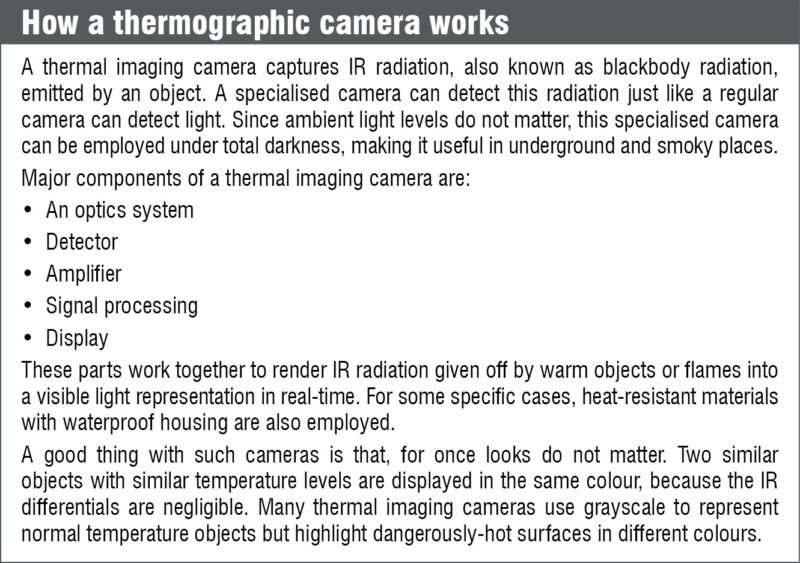
Additionally, wireless capabilities like wireless connectivity also put a load on power requirements. This renders Keysight 5855A capable of working for about three hours at a stretch. An additional battery is provided to reduce load as much as possible.
Implementing the equipment
From sports like cricket to research sciences like astronomy, all fields employ thermal imaging cameras for different purposes. Maintenance, repair and operations people use these to locate over-heating joints and parts in order to eliminate potential hazards. Construction technicians check for heat leaks to improve efficiencies of air-conditioning systems in buildings using thermal imaging cameras.
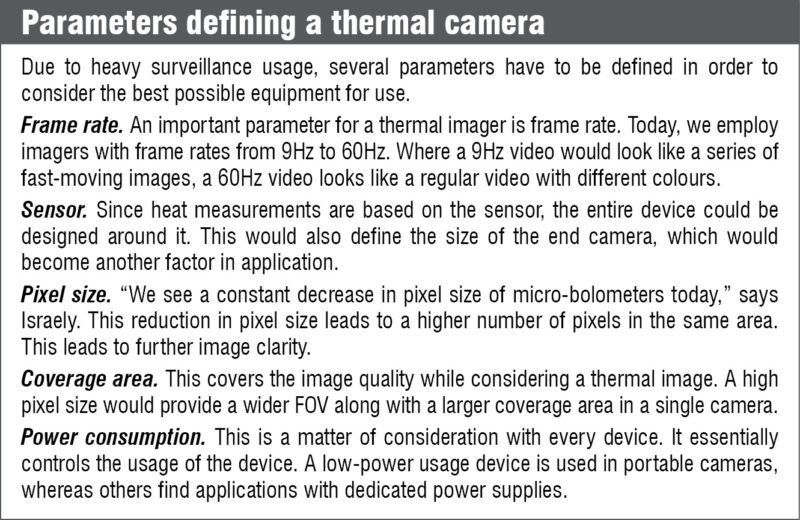
Thermal imaging cameras have become so popular that Philippe Baylaucq even directed a 15-minute short dance film, Ora, entirely in 3D thermography. Bhangare explains customer demand as, “an imager that can see far off objects large enough with correct temperature information.”
Some physiological activities, particularly responses such as fever in human beings andother warm-blooded animals, can also be monitored with thermographic imaging. Cooled IR cameras can be found at major astronomy research telescopes, even those that are not IR telescopes.
Commercial applications. “Due to high cost and sophistication of thermal imagers, civil market is presently very limited,” says Prijo Samuel, senior consultant global electronics 6Wresearch. But even with limited numbers, there is demand for such equipment. These equipment are highly precise in their measurements. “Products being developed for electrical and mechanical applications can measure temperature as per specified range with an accuracy of ±1.5°C,” adds Singh.
“Whenever used, commercial applications require long operating hours. Micro-bolometers are good for that since no maintenance is required,” adds Israely.
Redirecting traffic. Heavy traffic is now being controlled via thermal imagers as well. Manufacturers have come up with equipment specifically designed to cover rush-hour traffic in urban environments. These provide very accurate and real-time solutions for traffic controllers to dynamically reroute traffic.
FLIR TrafiOne is one such thermal imager module. It connects to a city’s traffic signal controller to allow for a more dynamic control of traffic signals based on traffic and pedestrian patterns and intensity. Using traffic flow information collected through a Wi-Fi tracking technology, it can also measure traffic delay times at intersections.
Defence involvement. Designing defence equipment requires a great deal of innovation and technological know-how. As Israely says, “Defence-related projects are often related to customising existing solutions to specific needs.”
“Thermal imaging systems such as thermal imaging fire control and thermal imaging sights were deployed in main battle tanks and mechanised infantry vehicles in recent years,” Rajat Kharbanda, senior consultant, research and consulting, 6Wresearch, adds.
Israely adds, “Driver’s vision enhancement kits are built to withstand the harsh conditions that involve armoured vehicle movement through the battlefield,”
Thermal imaging modules, and not camera core ones, are being called in for the defence sector. This allows for ease of use for defence personal. “MEOS modular EO/IR system is proven for border and coastal security as well as perimeter protection of critical sites including military bases, offshore oil/gas rigs and more,” mentions CONTROP’s vice president of marketing, Johnny Carni, in a press release.
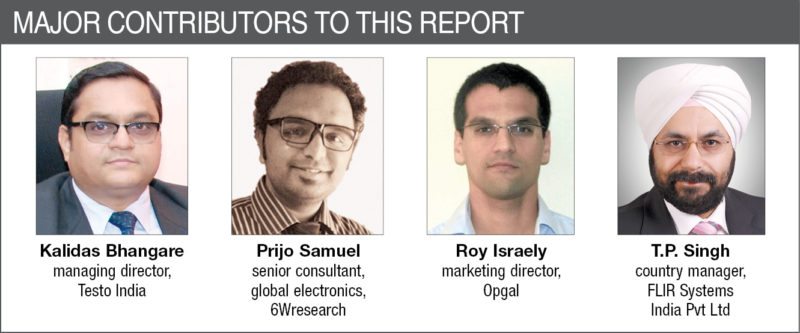
The future looks hot
Advances like easy-to-use accessories for smartphones have further increased the ease of use and made the devices available to the user. With applications ranging from security applications to sports referrals, newer uses are being considered daily.
“There is growing demand for handheld thermal imaging devices for industrial applications, and for cooled thermal imaging systems for fighter aircraft and armoured divisions,” adds Samuel. Requirement for portable equipment is on the rise, and thermal imagers will definitely not be left behind.
Saurabh Durgapal is working as technology journalist at EFY






